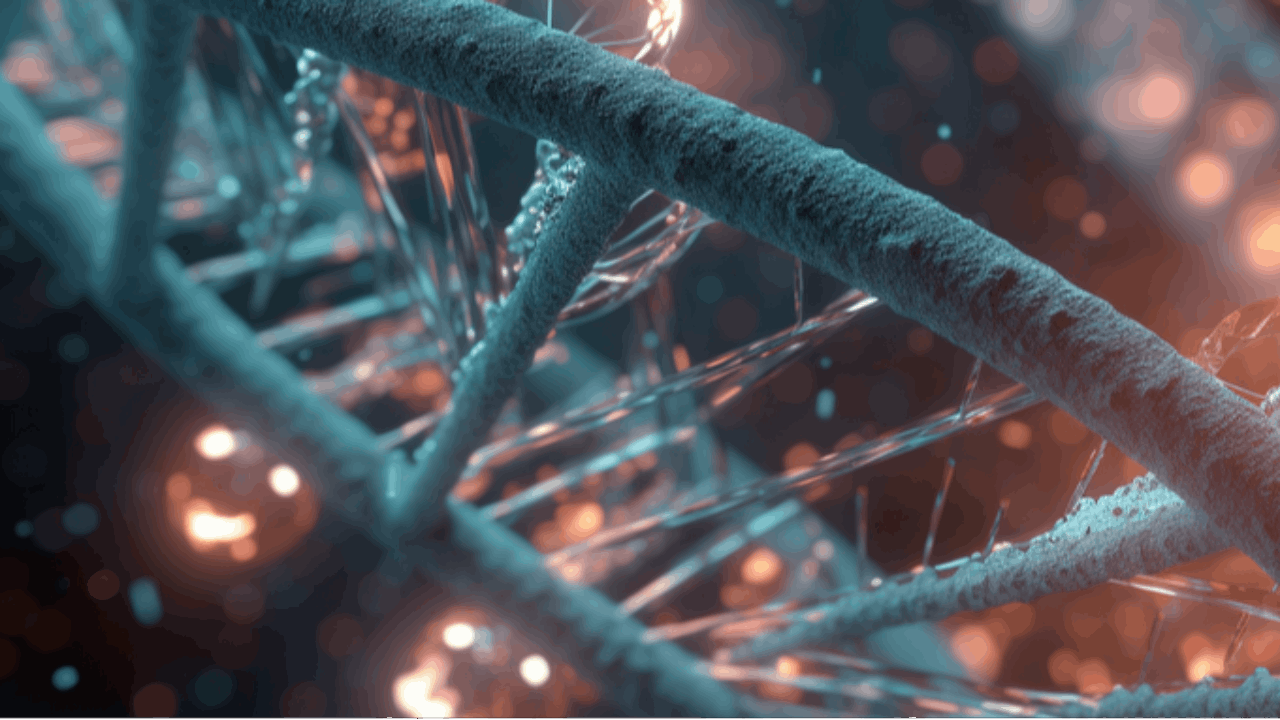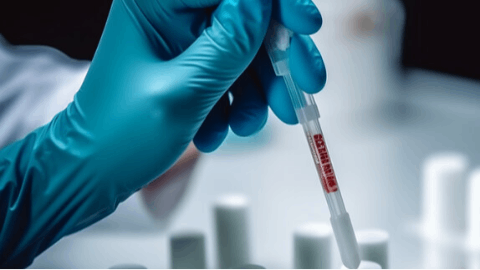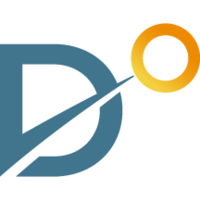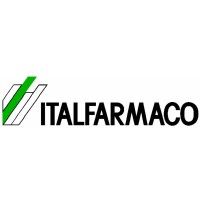预约演示
更新于:2025-05-07
nAChRα1/β1/δ/γ
更新于:2025-05-07
基本信息
别名 nAChRα1/β1/δ/γ |
简介- |
关联
42
项与 nAChRα1/β1/δ/γ 相关的药物作用机制 AChR拮抗剂 |
非在研适应症- |
最高研发阶段批准上市 |
首次获批国家/地区 日本 |
首次获批日期2020-09-25 |
作用机制 AChR拮抗剂 |
原研机构 |
在研适应症 |
非在研适应症- |
最高研发阶段批准上市 |
首次获批国家/地区 美国 |
首次获批日期2018-06-28 |
作用机制 AChR 激动剂 |
原研机构 |
非在研适应症- |
最高研发阶段批准上市 |
首次获批国家/地区 意大利 |
首次获批日期1996-04-03 |
224
项与 nAChRα1/β1/δ/γ 相关的临床试验NCT06002477
Attentional Mechanisms of Cognitive Compensation in Subjective Cognitive Decline
This study will use an anticholinergic pharmacological probe to examine attention network function in SCD using EEG. The overall hypothesis is that in older adults with SCD, normal cognitive performance is maintained by compensatory attention network activity, supported by enhanced cholinergic function. The investigators anticipate that SCD will be associated with greater compensatory attention network activity and that disrupting this compensatory process through anticholinergic challenge will result in a greater negative effect on attentional performance (Attention Network Test, ANT) and attention network functioning (EEG) in older adults with greater subjective cognitive concern.
开始日期2025-04-01 |
CTRI/2025/03/082601
Comparison of two different doses of cisatracurium on intubating conditions and intraoperative neuromonitoring during thyroidectomy: A randomized control trial - NIL
开始日期2025-03-25 |
申办/合作机构- |
CTRI/2024/11/076818
A comparative study of efficacy of atracurium and cisatracurium for hemodynamic stability in patients undergoing laparoscopic surgeries - NIL
开始日期2024-12-01 |
申办/合作机构- |
100 项与 nAChRα1/β1/δ/γ 相关的临床结果
登录后查看更多信息
100 项与 nAChRα1/β1/δ/γ 相关的转化医学
登录后查看更多信息
0 项与 nAChRα1/β1/δ/γ 相关的专利(医药)
登录后查看更多信息
2
项与 nAChRα1/β1/δ/γ 相关的文献(医药)2024-12-01·BMJ Neurology Open
Antigen-specific immune therapy (CNP-106) for treatment of generalised myasthenia gravis: rationale and design of first-in-human randomised controlled trial
Article
作者: Nowak, Richard J ; Elhofy, Adam ; G Brew, Samantha ; P McCarthy, Derrick ; Frey, Molly
Archives internationales de pharmacodynamie et de therapie
The effects of a new cholinolytic--8018--and its optical isomers on the central muscarinic and nicotinic receptors.
Article
作者: Zhao, D L ; Niu, W Z ; Liu, C G
26
项与 nAChRα1/β1/δ/γ 相关的新闻(医药)2024-10-30
CHICAGO, Oct. 30, 2024 (GLOBE NEWSWIRE) -- COUR Pharmaceuticals, a clinical-stage biotechnology company focused on the development of first-in-class, disease-modifying therapies designed to induce antigen-specific tolerance for immune-mediated diseases, today announced that the first patient has been dosed in its Phase 1b/2a proof-of-concept clinical trial evaluating CNP-106 as a potential treatment for people living with generalized myasthenia gravis (gMG). “Currently approved treatments for gMG work via broad immunosuppression and do not address the underlying autoimmunity of the disease,” said Dannielle Appelhans, President and Chief Executive Officer of COUR. “In preclinical studies to date, CNP-106 has demonstrated a unique ability to induce tolerance to acetylcholine receptor (AChR), leading to improved muscle function in an experimental model of autoimmune myasthenia gravis. These results indicate that CNP-106 has the potential to be a first-in-class treatment that offers people living with gMG a disease modifying therapy without burdensome immune system suppression.” The Phase 1b/2a double-blind, randomized, placebo-controlled clinical trial (NCT06106672) will enroll up to 54 patients with gMG, aged 18-75, to evaluate the safety, tolerability, pharmacodynamics, and efficacy of multiple ascending doses of CNP-106. About CNP-106CNP-106 is a biodegradable nanoparticle that encapsulates acetylcholine receptor (AChR). gMG is primarily driven by the production of antibodies against AChR in the bloodstream. These antibodies either block or destroy the receptors for acetylcholine, which is a crucial neurotransmitter for muscle contraction. As gMG progresses, it may lead to serious health issues, such as myasthenic crisis, tumors of the thymus gland, thyroid imbalances, and other autoimmune diseases. CNP-106 is designed to potentially induce the downregulation of AChR T cell populations and AChR antibodies, leading to improved muscle function. About COUR Pharmaceuticals:COUR Pharmaceuticals is a clinical-stage biotechnology company developing therapies to treat patients with autoimmune diseases. COUR’s first-in-class therapies are based on our proprietary antigen-specific immune tolerance platform and are designed to reprogram the immune system to address the underlying root cause of immune-mediated diseases. Data from multiple clinical and preclinical programs have demonstrated the ability of COUR’s product candidates to induce antigen-specific immune tolerance and have the potential to treat a wide range of autoimmune diseases. COUR is currently enrolling patients in a Phase 1b/2a double-blind, placebo-controlled, multicenter clinical study in Myasthenia Gravis and developing a product candidate in Type 1 Diabetes in addition to having completed first-in-human clinical studies in Celiac Disease (partnered with Takeda Pharmaceuticals), and Primary Biliary Cholangitis. For more information, please visit www.courpharma.com ContactsFor Investor RelationsBrian Bock, Chief Financial Officerbbock@courpharma.com For MediaJason Bracojbraco@lifescicomms.com
临床研究免疫疗法
2024-07-19
·医药笔记
2024年7月18日,和铂医药巴托利单抗注射液重新递交的上市申请获得NMPA受理,用于治疗全身型重症肌无力。根据临床试验方案,和铂医药已顺利完成三期临床试验的扩展研究,在未招募新患者的情况下收集了更多长期安全性数据。
重症肌无力是一种由AchR抗体、MuSK抗体等自身抗体介导的获得性自身免疫性疾病,绝大多数患者会发展为全身型重症肌无力(gMG),累计多个器官,严重影响生活质量,严重者会危及生命。美国约有5.9万-11.6万重症肌无力患者,中国至少有20万例重症肌无力患者,存在严重的未满足临床需求。
和铂医药巴托利单抗于2021年获得突破疗法认证,2023年3月,和铂医药宣布全身性重症肌无力三期临床获得积极数据。
2024年3月,巴托利单抗三期临床数据发表在JAMA Neurology期刊上。
该三期临床共纳入132例全身型重症肌无力成人患者,其中131例AChR/MuSK抗体阳性患者,每周给药一次,连续治疗6周,主要终点为患者重症肌无力日常生活量表(MG-ADL)得分较基线的变化情况。结果表明,巴托利单抗治疗可以快速起效,第2周开始症状即显著改善。在第43天,巴托利单抗治疗组的ADL评分持续改善率达58.2%(39/67),显著高于安慰剂对照组(31.1%,20/64)。在MG定量评分(QMGs)、MG复合评分(MGC)、15项重症肌无力生活质量评分(MG-QOL15r)分析中,巴托利单抗治疗组与安慰剂对照组也呈现了相似的趋势。
安全性方面,巴托利单抗治疗组与安慰剂对照组不良事件发生率相近,总体耐受性和安全性数据良好。
2022年10月,和铂医药与石药集团达成合作协议,在大中华区共同开发巴托利单抗,和铂医药负责巴托利单抗在中国针对全身型重症肌无力完整临床试验的设计与执行, 并将根据产品年度净销售额获得分层销售提成。
FcRn抗体市场价值潜力巨大,Argenx的Efgartigimod和优时比的Rozanolixizumab仅获批gMG一个适应症,前者在2023年即实现12亿美元销售额。Immunovant拥有巴托利单抗大中华区外权益,目前在开发全身性重症肌无力、甲状腺眼病、Graves' disease、慢性炎症性脱髓鞘性多发性神经病等。
内容来源于网络,如有侵权,请联系删除。

抗体药物偶联物申请上市突破性疗法免疫疗法
2024-07-01
·药明康德
强生(Johnson & Johnson)今日宣布,其靶向新生儿Fc受体(FcRn)的在研抗体疗法nipocalimab在全身性重症肌无力(gMG)患者中的3期Vivacity-MG3研究取得了积极结果。该试验达成主要终点,接受nipocalimab联合标准治疗(SOC)的患者在改善gMG疾病指标日常生活活动(MG-ADL)评分方面优于安慰剂联合SOC。强生将在2024年欧洲神经病学学会(EAN)大会上公布详细数据,并将在今年晚些时候提交该数据给监管机构。根据新闻稿,该疗法是在gMG抗体阳性患者(抗AChR+、抗MuSK+、抗LRP4+)中,与标准治疗联合使用时,改善患者MG-ADL评分上优于安慰剂的首个FcRn阻断剂。
这项双盲、安慰剂对照研究招募了广泛的抗AChR+、抗MuSK+和/或抗LRP4+患者,这些患者约占gMG患者群体的95%。与基线相较,在第22、23和24周,接受nipocalimab联合SOC治疗的患者在MG-ADL评分上平均改善了4.70分,显著高于安慰剂联合SOC治疗患者的3.25分(P=0.002)。对于gMG患者来说,MG-ADL评分变化1到2分可能意味着从正常进食到频繁吞咽困难,或从静息时的呼吸急促到需要呼吸机。
除了实现这一主要终点外,该试验还达到了关键的次要终点:
在第22周和第24周,定量重症肌无力(QMG)评分测量显示,与安慰剂联合SOC相比,nipocalimab联合SOC在不同肌肉群的力量和功能方面的改善显著更大(P<0.001)。
在第22、23和24周,nipocalimab联合SOC在MG-ADL应答(基线改善≥2分)方面显著优于安慰剂联合SOC(P=0.021),进一步强调了nipocalimab治疗对减轻gMG患者日常生活影响的潜力。
试验中nipocalimab的安全性和耐受性与其他试验一致。不良事件、严重不良事件和导致停药的不良事件的总体发生率与安慰剂联合SOC组相似。
Nipocalimab是一款潜在“best-in-class”,靶向新生儿Fc受体的抗体疗法。它通过与FcRn结合,让被单核细胞和内皮细胞摄入的自身抗体不会被重新释放到血液中,而是在细胞内被降解。已有研究显示,它可以将血液循环中包括致病自身抗体在内的IgG水平降低超过75%。这款抗体疗法有望治疗多种自身抗体介导的免疫疾病。FDA曾授予该疗法突破性疗法认定,用于治疗有高风险出现严重新生儿溶血病(HDFN)的孕妇,以及授予其快速通道资格用以治疗HDFN、gMG、温抗体型自身免疫性溶血性贫血(wAIHA)、胎儿新生儿同种免疫性血小板减少症(FNAIT)。这款疗法今年年初被行业媒体Evalute列为10大潜在重磅在研疗法之一。
参考资料:
[1] Nipocalimab pivotal Phase 3 trial demonstrates longest sustained disease control in FcRn class for broadest population of myasthenia gravis patients. Retrieved June 28, 2024 from https://www.investor.jnj.com/news/news-details/2024/Nipocalimab-pivotal-Phase-3-trial-demonstrates-longest-sustained-disease-control-in-FcRn-class-for-broadest-population-of-myasthenia-gravis-patients/default.aspx
内容来源于网络,如有侵权,请联系删除。

临床结果突破性疗法免疫疗法
分析
对领域进行一次全面的分析。
登录
或

Eureka LS:
全新生物医药AI Agent 覆盖科研全链路,让突破性发现快人一步
立即开始免费试用!
智慧芽新药情报库是智慧芽专为生命科学人士构建的基于AI的创新药情报平台,助您全方位提升您的研发与决策效率。
立即开始数据试用!
智慧芽新药库数据也通过智慧芽数据服务平台,以API或者数据包形式对外开放,助您更加充分利用智慧芽新药情报信息。
生物序列数据库
生物药研发创新
免费使用
化学结构数据库
小分子化药研发创新
免费使用





